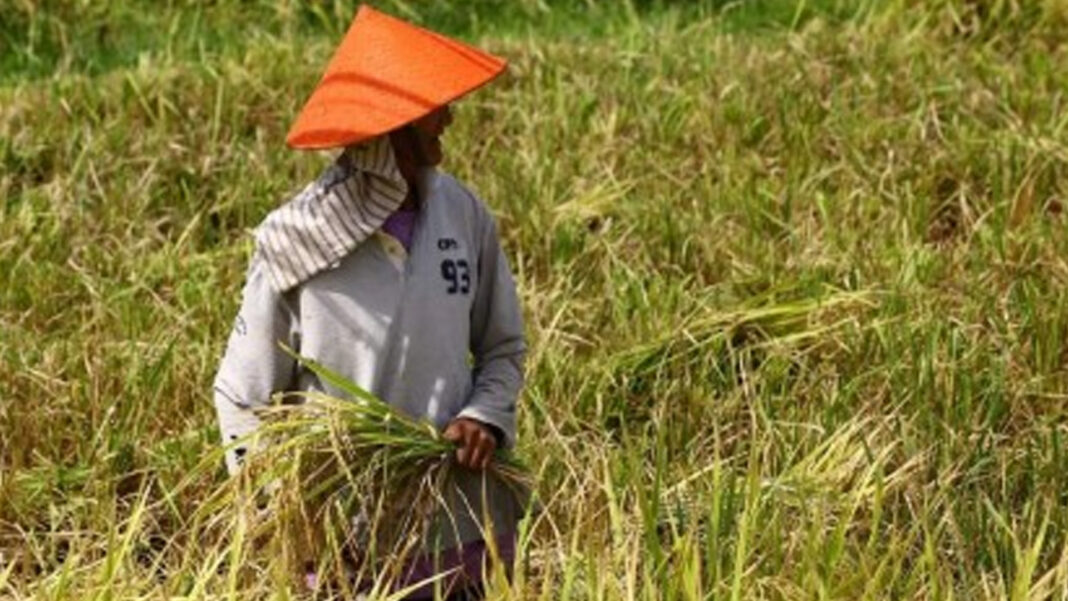Rice farmers posted higher earnings in 2024 despite rising production costs, while the country achieved a stronger rice buffer stock, the Department of Agriculture (DA) reported Thursday.
Based on data from the Philippine Statistics Authority (PSA), the average farmgate price per kg. of palay (unhusked rice) rose to PHP23.48 in 2024, up from PHP19.88 in 2023.
This increase resulted in a higher gross return of PHP95,906 per hectare and a net return of PHP36,211 per hectare, compared to PHP82,914 and PHP26,423, respectively, in 2023.
This corresponds to a net profit-cost ratio of PHP0.61 for every kg. of palay sold, higher than PHP0.47 in 2023 and PHP0.20 in 2022.
In a pre-State of the Nation Address (SONA) interview, DA spokesperson Assistant Secretary Arnel De Mesa said the Price Range Scheme (PRICERS) of the National Food Authority (NFA) had helped influence traders’ prices last year.
“Kahit bumaba iyong production natin dahil sa El Niño at La Niña at mga sunod-sunod ng bagyo last year… Nagkaroon naman ng magandang presyo iyong ating mga farmers (Even though the production dropped due to the effects of the El Niño, La Niña, and successive typhoons last year… There has been a good farmgate pricing for our farmers),” he told the Philippine News Agency.
“Especially naglabas ng resolusyon ng NFA Council na taasan iyong presyo ng buying price sa (that the NFA council has released a resolution to increase the buying price for) dry and clean between PHP23 to PHP30.”
The price per kg. of fresh and wet palay, meanwhile, ranges from PHP17 to PHP23.
Before the price adjustment, NFA’s buying price was pegged at PHP16 to PHP19 per kg. and PHP19 to PHP23 per kg., for wet and dry palay, respectively.
Farmers’ income, likewise, surpassed the higher cost of production last year, which De Mesa attributed to being driven mainly by increased labor costs.
According to the PSA, the average palay’s production cost rose to PHP14.52 per kg. last year, higher than the PHP13.54 per kg. in 2023.
De Mesa, however, explained that Filipino farmers have been “culturally” practicing payment in kind, particularly for their harvesting and threshing activities.
“Unlike other countries, ang binabayad nila sa harvesting ay cash. Sa atin, culturally speaking, ang binabayad natin iyong tinatawag na ikapu, 9 to 10 percent ng total harvest ang ibabayad sa harvesters (they are paying harvesting in cash. But for us, culturally speaking, we are paying in kind, 9 to 10 percent of the total harvest is used to pay harvesters),” he said.
The 10 percent volume of the total palay harvest is then valued using the average farmgate prices, which increased last year.
“So, kung titignan mo yung 2024 na data, dahil mas malaki iyong presyo ng palay at PHP23.48, in effect, mas lumaki iyong labor cost (if you look at the 2024 data, because of the higher price of palay at PHP23.48, in effect, there’s an increase in labor cost),” De Mesa said.
He noted that they would study to address possible gaps within the “accepted cultural practice” but assured continuous planting and mechanization support to further slash palay production costs moving forward.
Strong national rice buffer stock
De Mesa also highlighted the government’s success in increasing the country’s rice buffer stock through aggressive procurement efforts.
The national buffer stock now stands at 450,660 metric tons (MT) as of July 5, equivalent to 12 days’ supply – up from just one to two days before President Ferdinand Marcos Jr. took office.
The target under the amended Rice Tariffication Law (RTL) is a 15-day reserve for calamities and emergencies.
The higher farmgate pricing strategy enabled more farmers to sell to the government at profitable rates.
According to NFA Administrator Larry Lacson, 94,483 farmers have benefited from PRICERS since April 2024.
In terms of spaces, Lacson said 18 out of the 134 NFA warehouses subject to refurbishment were rehabilitated to optimize capacity and to cater to the needs of more local farmers.
These include upgrades in select warehouses in Pangasinan, Ifugao, La Union, Nueva Ecija, Isabela, Zambales, Bataan, Masbate, Catanduanes, Albay, Eastern Samar, Zamboanga del Sur, and Zamboanga del Norte.
Supporting RICE Act
The DA, meanwhile, backed the recently filed House Bill No. 1 or the proposed Rice Industry and Consumer Empowerment (RICE) Act, which seeks to restore the regulatory powers of the NFA.
To date, the NFA is only able to release its rice stocks through calamity responses in partnership with other government agencies and local government units (LGUs), the PHP20 per kg. rice program under the “Benteng Bigas Meron (BBM) Na” through the Food Terminal, Inc. (FTI) under the declaration of a state of food security emergency for rice, and auction.
Once enacted, the NFA may be authorized anew to perform market interventions to protect consumers from spiking retail prices, using procured stocks from local farmers through the accreditation of retail outlets for affordable rice sale.
A floor price may also be set under the proposed RICE Law to protect local farmers from unscrupulous traders who take advantage of them during harvest seasons with low buying prices.
As of July 17, the Samahang Industriya ng Agrikultura (SINAG), said the lowest buying of wet palay plunged to as low as PHP5 per kg. in Nueva Ecija.
Agriculture Secretary Francisco Tiu Laurel Jr. earlier ordered the NFA to look into areas with reportedly low traders’ prices for possible intervention. (PNA)


